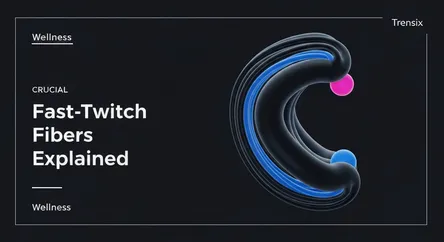Wellness
Fast-Twitch Fibers Explained

Understand fast-twitch muscle fibers, your body's source of explosive power, and how training them can boost speed, strength, and prevent age-related decline.
What is it?
Fast-twitch muscle fibers, also known as type II fibers, are specialized muscle cells that contract quickly to produce short, powerful bursts of movement. Unlike their slow-twitch (type I) counterparts which are built for endurance, fast-twitch fibers are larger and fatigue rapidly. They are essential for anaerobic activities such as sprinting, jumping, and heavy weightlifting. These fibers rely on stored carbohydrates for their rapid energy production, rather than oxygen, which is why their output is short-lived. There are two main types: type IIa, which can use both aerobic and anaerobic metabolism, and type IIx, which are the most powerful and fastest-fatiguing fibers.
Why is it trending?
Interest in fast-twitch muscle fibers is growing due to a greater focus on performance-based fitness and athletic development. Training methods like High-Intensity Interval Training (HIIT) and plyometrics, which specifically target these fibers, have become mainstream. Furthermore, research highlights their importance in daily life, especially in aging. As people get older, they tend to lose fast-twitch fibers at a higher rate, a process called sarcopenia, which increases the risk of falls. Consequently, there is a rising awareness that training these fibers is crucial not just for athletes, but for maintaining mobility and reflexes later in life.
How does it affect people?
The composition of fast-twitch fibers significantly impacts a person's athletic aptitude, often influencing whether they excel in power sports or endurance events. For athletes, developing these fibers is key to improving speed, strength, and explosive power. For the general population, strong fast-twitch fibers are vital for everyday actions, like catching yourself from a trip or quickly lifting a heavy object. Maintaining these fibers through resistance and power training helps preserve muscle mass, supports metabolic health, and enhances overall physical capability, contributing to a better quality of life and functional independence as we age.